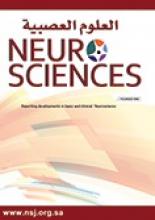Article Information
PubMed
Published By
Online ISSN
History
- Received May 3, 2016
- Accepted August 4, 2016
- Published online November 13, 2020.
Copyright & Usage
Copyright: © Neurosciences Neurosciences is an Open Access journal and articles published are distributed under the terms of the Creative Commons Attribution-NonCommercial License (CC BY-NC). Readers may copy, distribute, and display the work for non-commercial purposes with the proper citation of the original work.
Author Information
- Hashem Haghdoost-Yazdi, PhD,
- Hossein Piri, PhD⇑,
- Reza Najafipour, PhD,
- Ayda Faraji, MD,
- Negin Fraidouni, Msc,
- Tahereh Dargahi, BSc and
- Mahmud Alipour Heidari, PhD
- From the Student Research Committee (Faraji, Fraidouni, Dargahi), School of Medicine, and from the Cellular and Molecular Research Center (Haghdoost-Yazdi, Piri, Najafipour, Alipour Heidari), Qazvin University of Medical Sciences, Qazvin, Iran
- Address correspondence and reprint request to: Dr. Hossein Piri, Cellular and Molecular Research Center, Qazvin University of Medical Sciences, Qazvin, Iran. E-mail: hosseinpiry{at}gmail.com






